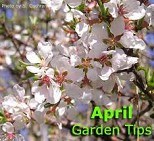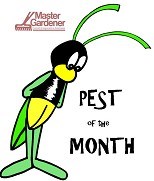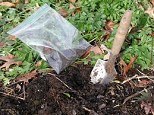Posted 4/8/2014

Cornell Cooperative Extension Master Gardener Mary Ann Charon will be teaching a workshop about vegetable container gardening on Wednesday, April 30, 2014 from 6:30 – 7:30 p.m. at the Shirley J. Luck Senior Citizen Center at 109 East Main Street in Johnstown, New York. The cost is $10.00 per person. To register, interested individuals must call Cornell Cooperative Extension at 518-673-5525 by Thursday, April 24. Class space is limited.
Are you interested in gardening but have limited space? Join Master Gardener Mary Ann Charon as she shares how to grow vegetables for your table through container gardening. Participants will learn how to select containers and plants, design containers and maintain a mini-garden throughout the season. Each workshop participant will plant a container garden of his/her own to take home. All materials will be supplied.
Posted 3/14/2014

Using Local Organic Amendments for Soil Health
Tuesday, March 25, 10 am to 3 pm
Spiritual Life Center, 575 Burton Rd., Greenwich
(in the Great Room, Chapel building, follow the signs)
Topics
- Understanding Soils and Soil Health
- Interpreting a soil test analysis
- Compost and paper fiber by-products used for soil amendments
- How to read an analysis of organic soil amendments
- Properly using organic soil amendments to build soil health
Posted 3/4/2014

Hands-On Fruit Tree and Shrub Pruning Workshop
Cornell Cooperative Extension Schoharie and Otsego Counties will host a fruit tree and shrub (apple, blueberry, raspberry) pruning workshop on Saturday, March 22, from 10 a.m. to noon. This hands-on workshop will be held at Middlefield Orchards, 2274 State Highway 166 in the Town of Middlefield, Otsego County. For directions visit http://middlefieldorchard.com/directions/. The fee is $5 per person, payable at the door. Pre-registration is appreciated by Thursday, March 20. Participants are encouraged to dress appropriately and to bring their own pruning tools. Extra tools will be on hand.
To pre-register or for more information call Cornell Cooperative Extension Schoharie and Otsego Counties, 518-234-4303 / 296-8310. Cornell Cooperative Extension provides equal program and employment opportunities. Accommodations for persons with special needs may be requested by contacting Cornell Cooperative Extension Schoharie and Otsego Counties prior to the workshop.
Posted 1/8/2014
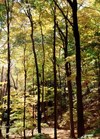
New York Forest Owners Association, Southeastern Adirondack Chapter
and
Cornell Cooperative Extension
~ present a program that is free and open to the public ~
“Managing Native Seed Sources as a Critical Natural Resource”
Speaker: Edward Toth, Director Greenbelt Native Plant Center and Director of Mid-Atlantic Regional Seed Bank
February 1, 2014 at 2:00 p.m.
Crandall Public Library, Community Room
251 Glen Street
Glens Falls, New York 12801
518-792-6508
Seed collection isn’t a new science. It has been going on since ancient times. So why is it so important today? Native seeds provide many benefits to wildlife and the native ecosystem for diversity. Native plants offer many positive aspects to the local flora and fauna for food and cover - seeds, nuts, fruits, nectar, and as a host plant for many species. For example, ash trees alone offer a habitat for about 150 native Lepidoptera (butterfly and moth species) and around 44 arthropod (insects and spiders) that solely need ash trees for survival.
Information about conservation and use of ecotypic seed as well as a bit of history and science behind the benefits of using local /native genotypes will be shared.
This program is being sponsored by a Friend of NYFOA - SAC
Posted 12/19/2013

Cornell Cooperative Extension Holiday Office Hours
Cornell Cooperative Extension of Fulton and Montgomery Counties will be CLOSED to the public December20, 2013-January 3, 2014.
We wish you a Happy Holiday Season and look forward to serving you in the New Year!!
Posted 12/12/2013

Rosemary plants are popping up in nurseries at the holidays among the mini-Christmas tree alternatives. Image credit: Sharon Dowdy.
Rosemary plants are gaining popularity as a holiday gift and miniature, living Christmas tree. After the holidays, you can use it as an indoor houseplant. With a little care, holiday rosemary plants can be added to the landscape in the spring.
Botanically speaking, Rosmarinus officinalis is an aromatic, woody shrub that originated in the Mediterranean. The word “rosemary” is derived from the Latin rosmarinus, meaning, “dew of the sea.” This refers to where it grows natively, among the misty hills of the Mediterranean coast, in France, Italy, Spain and the Dalmatian Islands.
Posted 12/12/2013
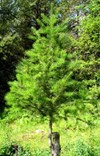
Stump Culture photo from Canadian Xmas Tree Assoc (click for website)
Many gardening and horticulture pursuits are on pause for the dormant season this winter, but many homeowners affect their surrounding landscapes with a traditional purchase for inside the home: the Christmas tree. Approximately 25 to 30 million trees are sold each year in the United States, according to the National Christmas Tree Association. Consumer demand for trees makes for a large impact, with over 350, 000 US acres currently in Christmas tree production.
Christmas tree farming has a mixed environmental impact. The trees, which take anywhere from 4 to 20 years to mature, provide wildlife habitat and hold soil and water as compared to annual field crops. Some farms have to use pesticides to deal with pest problems and have to mow frequently to keep grasses down. (see NC State Extension for more information on environmental impacts). And at the end a stands life-cycle, the ground has to be plowed and re-planted from imported seedlings.
Posted 11/4/2013

These classes are now full with a lengthy wait-list! Thanks for your interest!!!!
With the holidays around the corner the Master Gardeners are planning two holiday classes where the general public can come learn how to make wreaths and kissing balls. All materials will be supplied and participants will leave with the wreaths that they make. The two classes and the details are listed below.
- "Learn to Make a Kissing Ball and Pine Cone Wreath" (Thursday, November 21st) : This class will be held at 6 p.m. at the Shirley J. Luck Senior Citizen Center 109 East Main St. Johnstown. Cornell Cooperative Extension Master Gardeners Mary Ann Charon, Joan Eckler and Bob Farrell will show you how to create your own kissing ball and pine cone wreath during this hands-on workshop. Instructors will demonstrate the techniques and participants will each make an evergreen kissing ball and a pine cone wreath. All materials will be supplied. Class is limited to 15 participants—Register on or before November 14th. Must have at least 5 to hold workshop. Cost is $10 per person payable at registration. To register: Call Cornell Cooperative Extension, 518-673-5525 ext 113.
- " Learn to Make Natural Wreaths" (Tuesday, December 3rd): This class will be held at 6 p.m. at the Cornell Cooperative Extension Office 50 East Main Street, Lower Level, (United Methodist Church), Canajoharie, NY. Join Cornell Cooperative Extension Master Gardeners Mary Ann Charon, Joan Eckler and Bob Farrell as they show you how to create your own wreaths during this hands-on workshop. Instructors will demonstrate the techniques and participants will each make two wreaths—one pinecone and one balsam . All materials will be supplied. Class is limited to 15 participants—Register on or before November 26th. Must have at least 5 to hold workshop. Cost is $10 per person payable at registration. To register: Call Cornell Cooperative Extension, 518-673-5525 ext 113.
Posted 11/4/2013
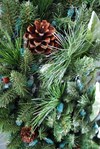
Celebrate the Holidays with Greenery
Decorating the house with fresh greenery is one of the oldest winter holiday traditions. Evergreens have been a part of winter festivals since ancient times. Evergreens are used to represent everlasting life and hope for the return of spring. Today, decorating for the holidays with fresh greenery is more prevalent than ever. Greenery such as cedar, ivy, pine and holly add a fresh look and natural scent to our homes.
You can celebrate the upcoming holidays with evergreen decorations you make yourself! Enhance your indoor or outdoor holiday decor or make attractive gifts. Wreaths, swags, balls, garlands, and table arrangements can all be made at home with a few simple materials.
Cone bearing or needle evergreens are commonly used in holiday decorations. You can purchase greens or carefully prune them from your home landscape. Some of the most suitable types are:
Balsam fir
Douglas fir
False cypress
Austrian pine
Yew
Red pine
White pine
Red cedar
Juniper
Scots pine
Avoid hemlock and spruce for indoor use since they drop their needles quickly. Broad-leaved evergreens are commonly used as holiday greens where they grow as hardy landscape plants. Holly and boxwood are excellent choices. Others include barberry, Oregon holly-grape, English ivy and rhododendron. Special care should be taken when harvesting this type of material not to damage the ornamental value of the plant.
For more information about decorating with greens as well as making wreaths and kissing balls, please refer to the attached resources:
Holiday Decorating with Fresh Greenery – The Clemson University Cooperative Extension Service
Holiday Greens – Purdue University Cooperative Extension
Making Balsam Fir Wreaths – University of Maine Cooperative Extension
Making Wreaths – Clemson Extension
Posted 9/24/2013

With Fall here it's time to start thinking about digging up those bulbs and storing for winter. Below is a list of bulbs and how to care for them courtesy of the University of Illinois Urban Extension.
- Tuberous Begonias: dig the tubers after the first frost; dry the tubers in the open air for a few days’ store tubers in dry peat moss, vermiculite, etc. at 35 – 40 degrees
- Caladium tubers: should be dug in fall before leaves lose all their color; dry the tubers in the open air for a few days’ store in dry peat or vermiculite at 70 to 75 degrees
- Calla Lily: dig rhizomes in fall after foliage withers; allow rhizomes to dry and store at 50 to 60 degrees
- Cannas: dig rhizomes in fall after the first frost; let rhizomes dry for a day or two and store in dry peat or vermiculite at 40 to 50 degrees
- Dahlias: the tuberous roots should be dug after the first frost. Before digging cut the tops off so that a three to four inch section of stem remains attached. This insures that there is a bud present togrow next season. Tuberous roots, unlike other underground structures have no buds (growing points). Tuberous roots tend to spread so dig away from the main stem. Try to dig the entire clump to avoid injuring the individual roots. Remove the majority of the soil from the clump, let the remainder dry and remove it once dry. Store in dry peat or vermiculite at 35 to 50 degrees. The packing material can be slightly mo8ist to reduce shrinkage of the tuberous roots.
- Elephant Ears: should be dug up in autumn after the first frost; allow the tubers to air dry and storein dry peat or vermiculte at 70 to 75 degrees.
- Gladiolus: dig the corms up after the first frost. Cut the stems just above the corm and air dry for a week or more. Store in mesh bags or slotted trays with good air circulation at 40 to 45 degrees.












